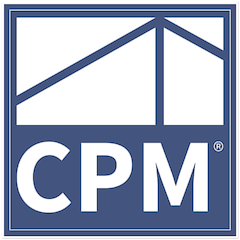The Cornerstone of Success: The Importance of Maintenance and Repairs for Investment Properties

The Cornerstone of Success: The Importance of Maintenance and Repairs for Investment Properties
Introduction
Investing in real estate can be a rewarding venture, but it comes with its own set of responsibilities and challenges. Among these, one critical aspect often overlooked or underestimated is property maintenance and repairs. Whether you own a single-family home, a multi-unit apartment building, or a commercial property, the upkeep of your investment is paramount. In this blog, we will explore the vital importance of maintenance and repairs for investment properties, shedding light on the long-term benefits and the potential pitfalls of neglecting this crucial facet of property ownership.
Preservation of Property Value
One of the primary reasons for maintaining and repairing investment properties is to preserve their value. Real estate investments are intended to appreciate over time, but this appreciation can be seriously compromised if the property is not well-maintained. A property in disrepair will likely see a decline in its market value, making it less attractive to potential buyers or tenants. Regular maintenance not only prevents this decline but can also enhance the property's value over time.
For instance, a well-maintained property with updated fixtures and modern amenities can command higher rental or sale prices than a similar property in poor condition. Moreover, properties that are properly maintained are less likely to suffer from structural issues or deferred maintenance, which can be costly to rectify and have a negative impact on property value.
Tenant Retention and Satisfaction
In the world of real estate investing, the importance of happy and satisfied tenants cannot be overstated. Well-maintained properties offer a higher quality of living, and tenants are more likely to stay longer when they feel comfortable and secure in their homes. This stability in occupancy rates can lead to a more consistent rental income stream, reducing the risk of vacancies and income loss.
On the other hand, neglecting maintenance can lead to tenant frustration and dissatisfaction. Persistent issues, such as leaky roofs, malfunctioning heating systems, or plumbing problems, can result in tenant turnover. This not only disrupts your cash flow but also incurs expenses related to advertising for new tenants and potential renovations to attract them.
Preventive vs. Reactive Maintenance
There are two approaches to property maintenance: preventive and reactive. Preventive maintenance involves proactively identifying and addressing potential issues before they become major problems. On the contrary, reactive maintenance occurs when issues are addressed only after they have escalated and caused significant damage.
Investors who opt for preventive maintenance tend to incur lower repair costs in the long run. For example, regularly servicing heating and cooling systems can extend their lifespan and reduce the chances of a costly breakdown during extreme weather conditions. By contrast, ignoring routine maintenance may lead to complete system failure, necessitating a more expensive replacement.
Budgetary Considerations
Setting aside a dedicated budget for maintenance and repairs is a fundamental aspect of responsible property ownership. Failing to allocate sufficient funds for this purpose can have dire consequences, including financial strain, deferred maintenance, and potential legal issues if the property falls into disrepair.
A well-structured budget allows you to plan for both routine maintenance tasks and unexpected repairs. It provides a financial safety net to address issues promptly, minimizing the risk of escalating repair costs. Furthermore, budgeting for property improvements and upgrades can enhance the property's appeal to tenants and investors, ultimately boosting its value and rental income potential.
Legal Compliance and Liability
Maintaining your investment property in compliance with local building codes and regulations is not just a matter of avoiding fines; it's a legal obligation. Non-compliance can lead to costly legal battles and fines, and it may also put your tenants at risk. Ensuring the safety of your tenants by adhering to safety standards and regulations is not only a legal requirement but also an ethical responsibility.
For instance, failing to install smoke detectors or maintain fire extinguishers can result in severe consequences if a fire were to occur. Adequate maintenance and safety measures not only protect your investment but also safeguard the well-being of your tenants.
Emergency Preparedness
Investment properties are susceptible to unexpected emergencies, such as burst pipes, electrical failures, or storm damage. Being prepared for these situations can make the difference between a minor inconvenience and a catastrophic financial setback.
Having an emergency fund specifically earmarked for property-related crises is essential. This fund can cover the costs of urgent repairs and temporary accommodations for tenants if the property becomes uninhabitable due to unforeseen circumstances. Without such preparations, investors may find themselves in dire financial straits when an emergency arises.
Tenant Responsibilities and Communication
Clearly defining tenant responsibilities regarding minor maintenance tasks, such as changing light bulbs, replacing air filters, and reporting issues promptly, is crucial. Effective communication with tenants is also vital. Encourage them to report maintenance issues promptly, and be responsive to their concerns.
Open lines of communication can help you address problems before they escalate into more significant and costly repairs. Furthermore, it fosters a positive landlord-tenant relationship, which can lead to better tenant retention and cooperation.
Long-Term Planning
Successful real estate investors take a long-term view of their properties. This includes developing a comprehensive maintenance and repair plan that anticipates the property's needs over time. Such a plan can include regular inspections, routine maintenance schedules, and projections for major renovations or replacements.
Long-term planning ensures that you are well-prepared for the property's future needs and can budget accordingly. It also allows you to strategize for improvements that can increase the property's value and appeal to prospective tenants or buyers.
Energy Efficiency and Sustainability
Investors who prioritize maintenance and repairs also have an opportunity to enhance the energy efficiency and sustainability of their properties. Energy-efficient upgrades, such as insulation, energy-efficient appliances, and LED lighting, can reduce utility costs for both the landlord and tenants. Additionally, promoting sustainability can attract environmentally conscious tenants and potentially increase the property's value.
Renovations and Upgrades
Periodic renovations and upgrades can rejuvenate your investment property and make it more competitive in the market. While maintenance addresses the day-to-day wear and tear, renovations can address larger issues or enhance the property's aesthetic and functional appeal.
Investors should carefully consider which renovations and upgrades offer the best return on investment (ROI). For instance, updating kitchens and bathrooms, improving curb appeal, and adding modern amenities can increase the property's appeal and rental income potential.
Conclusion
In conclusion, maintenance and repairs are the cornerstones of successful real estate investment. Neglecting these crucial aspects can lead to property devaluation, tenant turnover, legal issues, and financial hardships. On the contrary, responsible property ownership, with a focus on preventive maintenance, budgeting, compliance, and long-term planning, can ensure the sustained success of your investment properties. By prioritizing maintenance and repairs, you not only protect your investment but also provide a safe, comfortable, and attractive living environment for your tenants, fostering positive landlord-tenant relationships that can benefit both parties in the long run. Remember, a well-maintained property is not just an investment; it's a testament to your commitment to excellence in real estate ownership.
Share this post













